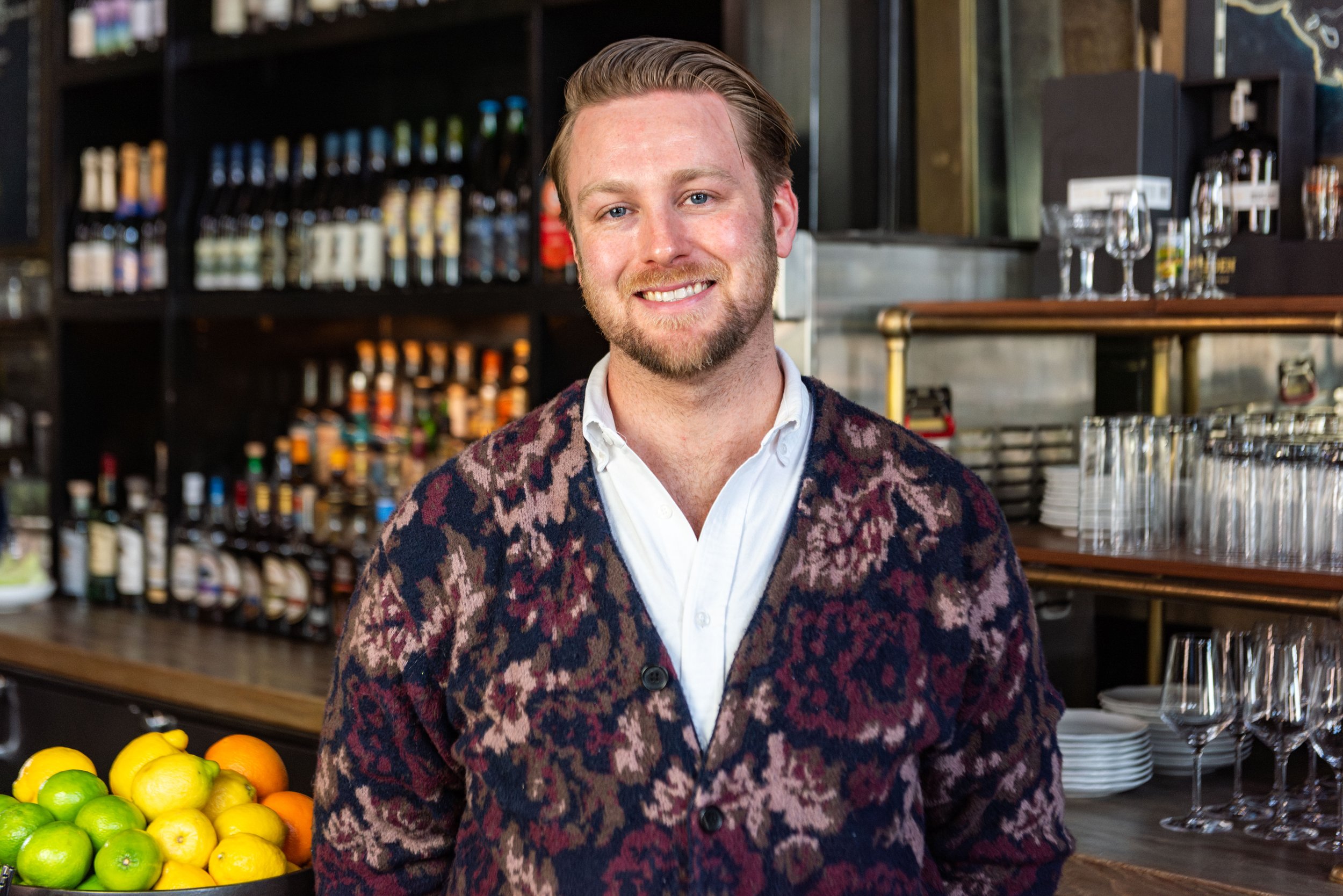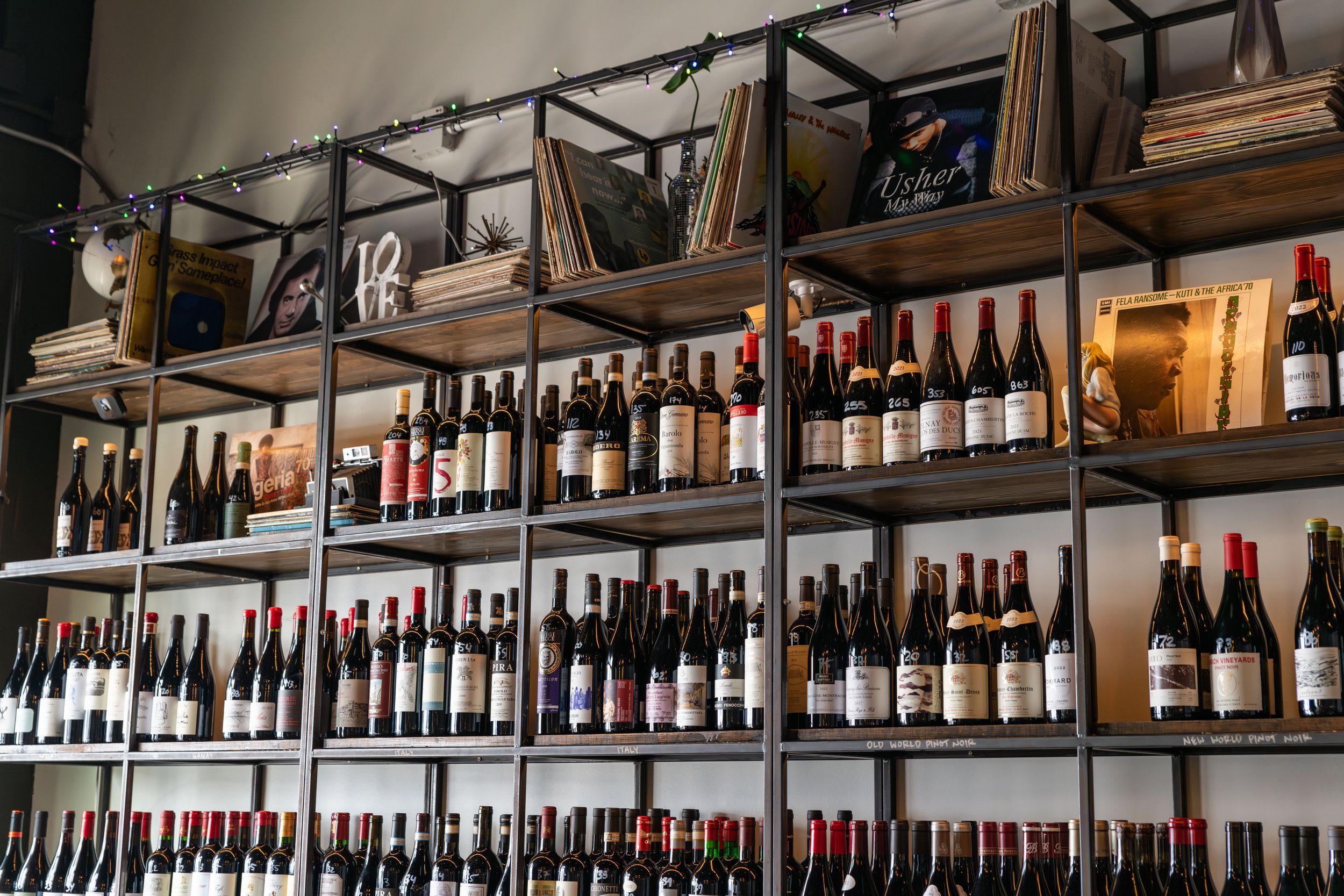Pop a Bottle: Embracing BYOB in Philly
Beyond the freedom from corkage fees and limited options, BYOB offers restaurants respite from a slew of constraints.
It is weird the first time you try it. Honestly, it’s weird the second time, too. Like so many things—like all things, really—it’s strange until it becomes a habit. But if you’re not from here, if you didn’t grow up here and learn to dine here, then it might take a while for Philly’s BYOB culture to feel normal.
But you get used to it. From the outside it looks like a hassle: a clumsy work-around solution to an entrenched, antiquated, and puritanical bureaucracy that limits the number of licenses allowed and controls all the liquor purchasing in Philadelphia. And it absolutely is all those things. But those BYOBs are also largely responsible for Philly’s booming restaurant scene. And in this fiercely local, hugely collaborative, DIY-kind of town, Philly’s restaurateurs (with the enthusiastic help of Philly’s diners) have turned what seems like a complicated annoyance into the thousand small engines that keep pushing the scene forward even when it wants to stand still.
“We have some dreams, sure. Looking at the future? Maybe. But we’re already a 20-seat restaurant that squeezes in 28. And yeah, where would I put a bar?”
That’s Chef Chance Anies.He runs Tabachoy—this tiny Filipino place in Bella Vista that is loud, bright, and always busy. He’s a great example of how to do everything on a budget of nothing.
chef chance anies
Pork Adobo, Garlic Rice, Balsamic Vinegar
“Look,” he says. “You have to have 30 seats to get a license anyway. So it just didn’t make sense. But even if I did have one, I don’t think it’d be worth it.”
The cost, he says. The complications. He knows that he’s giving up money by not having a bar, but a full license in Philly could run you anywhere from around $15,000 to $200,000, sometimes more. Then set-up? And probably needing a bigger space, too, means paying more for rent and more staff. It becomes a calculation. How many margaritas would I have to sell…? And anyway, there’s a purity in going BYOB. “As a chef,” Anies says, “it was nice to not have to build a beverage program around my food.”
That sentiment is shared amongst a lot of chefs: that not having to worry about the bar was freeing. That it allowed chefs to be chefs; to focus on the food alone.
Aaron Randi from Illata came to Philly from New York, had no idea about the BYOB culture here, and yet he opened a place that only exists because of it.
“I basically just wanted to create this small, intimate, cozy, neighborhood place. To mimic a wine bar without being a wine bar.” And though, early on, he considered going for a license, he decided that was unrealistic. Illata right now feels so personal, so raw. When you walk in with a bottle, it feels like you’re dropping in on a housewarming party for Randi and his crew. It feels like you’re part of the family.
And that right there—that feeling of connection? That is what being a Philly BYOB buys you. A roughness and a sweetness that feels true in a city with zero tolerance for bullshit. 20 seats and a dream? That’s why so many restaurateurs start here.
Marinated Mussels, Hakurei Turnips, Miso, Chile Oil
Chef Aaron Randi
Everyone makes it work in their own way. Restaurants scale down their glassware, simplify their wine service. There are corkage fees, but mostly for restaurants with higher price points, or for those that have small wine lists to serve from but also allow BYOB. $5 is reasonable. $10 is tolerated. Anything more and you’re chasing tables away. For a while, Tabachoy had a community refrigerator stocked with beer and mixers, but it was too much trouble to keep it filled. Plus, the real estate on the floor was too valuable—losing the fridge meant squeezing in two more seats: maybe six or eight additional covers a night.
Chef James Nardone says, “Honestly, it’s a thousand percent based on financial reasons.” He runs a small-small BYOB called Elma—12 seats, fixed six-course tasting menu, no corkage fee but a limit of one bottle per guest. A small restaurant, focused on seasonal product and relationships with his customers that he built doing pop-ups and collaborations. “I wanted financial freedom,” he says. “Avoiding interest rates and investors with equity made sense to start laying the groundwork for a self-sustaining business model.” He makes it work with a set menu, an understanding of how his reservations flow across the month, and by being disciplined: “Buying tight, controlling spending—sometimes I do the job of two people to save money.” Plus, “people who are into wine love to BYOB. They have a collection and want to enjoy it with our featured menu.”
The BYOB culture in Philly lowers the barrier to entry into the restaurant game. It makes it possible for someone to bring the flavors knocking around in their heads directly to the neighbors. Because the diners here are so accepting of it, going BYOB offers a way in for the little guy, the small operator, the chef who’s putting everything on the line. And when it works, it can make you huge.
chef james nardone
Ricotta Gnudi, Caramelized Cipollini Onions, Braised Swiss Chard, Pecorino Romano Fonduta, Shaved Burgundy Truffle
Ange Branca used to run one of the best restaurants in the city, a place that defined a particular moment in time for the industry. It was called Saté Kampar, it was a BYOB, and it almost won a James Beard Award for Best New Restaurant. “Tumblers!” she laughs. Tumblers were all she had at Saté Kampar back in the day. Not even wine glasses. “People would come in and they would ask how this place got nominated for a James Beard Award and it doesn’t even have a wine program!”
But Saté Kampar could’ve only existed as a BYOB. Back in 2015, Branca was trying to navigate the Byzantine rules. And to hustle up a quarter of a million dollars for a license? No way. “It’s a whole other job in itself,” she says of trying to get a license. “It takes me away from making food.”
And while for some chefs (like Nardone and Randi) a BYOB can be not just a stepping stone to bigger things, but the goal in itself. Branca knows all about the cost/benefit calculations because she’s in the process of opening a new spot, Kampar, which is like Saté Kampar but all grown up and with a bar now.
“[BYOBs are] why the food in Philly is as eclectic as it is,” she says. “It allows people to get started without that red line.” Without it being cost-prohibitive, without it being 10 times as hard as it already is. “And that kind of energy is what makes all the pop-ups, the collaborations, and all these little BYOBs thrive. That feeling between the restaurant and the customers. That kind of understanding that if the city won’t help us, the people will. That’s why it works. That’s what’s beautiful about Philly.”












